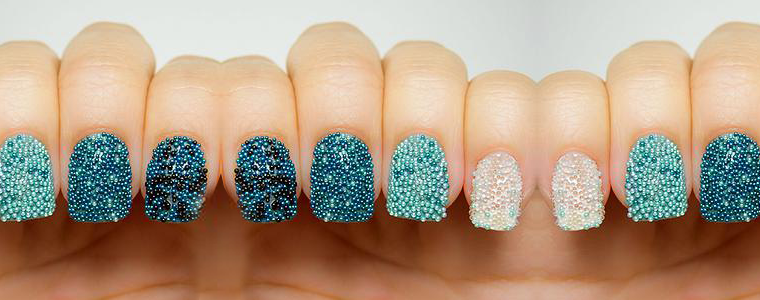Every day we make simple choices that impact our planet’s oceans: How much we drive our cars, what we put down the drain, what seafood we buy and, more and more - what we do with all that plastic in our lives.
Global use of synthetic plastics has skyrocketed in the last decade. We’ve become a world of plastiholics and it’s taking a serious toll on ocean life, even more serious than almost anyone had thought.
A major new study by the Five Gyres Institute and a large group of ocean researchers has amped up our awareness of the plastic pollution problem. Thanks to our plastic addiction, there are now over 5 trillion pieces of plastic debris floating in water around the world, to the tune of somewhere around 268,000 tons. That conclusion is from computer models based on data from 24 ocean samping expeditions conducted between 2007 and 2013 in 1,571 locations.
Most of the plastic pieces in our oceans are very small, less than 5 mm in size, of which the tiniest pieces (less than one millimeter in diameter) are referred to as “microplastics.” And it’s not just confined to areas near population centers. Plastic is found frozen in the artic and circulating at about the same concentration in the less populated Southern hemisphere and many remote areas of the ocean.
So what’s the issue with all this floating plastic? Obvious concerns are how the larger pieces can strangle or obstruct the stomachs of marine life, such as seals, turtles and seabirds, and how small nearly invisible pieces get gobbled up by fish and crustaceans. We also know that the polyethylene microplastics in the ocean act like a toxin sponge, absorbing nasty chemicals such as DDT, PCB and oily industrial pollutants. All this toxic plastic can make its way up the food chain onto our plates.
Even scarier, there’s evidence suggesting that nano-particle sized microplastics can interfere with phytoplankton’s ability to photosynthesize light. This means that the respiration of these critical microscopic creatures is impaired, so they can't absorb atmospheric carbon dioxide. More microplastic in the ocean could, therefore, be directly affecting global climate change.
Microplastics come from three main sources: The breakdown of larger plastic waste such as plastic bags is one. Another one in the news lately is microbeads in personal care products such as facial scrubs, cleansers and toothpaste.
The third significant source is one that’s gotten less press. In 2011, researcher Mark Browne released a study showing that one of the biggest sources of plastic in our oceans could be coming from our laundry rooms. About 1,800 miniscule microfibers can get rinsed out of a single piece of synthetic clothing each time it's washed! These particles are not currently filtered out by our machines or wastewater treatment so they may be flowing into marine ecosystems.
Dealing with the microfiber issue is a huge challenge. While consumer awareness and environmental action is gradually convincing manufacturers to phase out microbeads in cosmetics and toothpaste, synthetic fibers are woven deeply into the fabric of our modern lives.
Synthetic textiles have a lot of advantages and applications. Think nylon, high-tech polyester, microfleece and more. Yet so far, not even the more environmentally conscious apparel companies are taking action on it. They say we don't know enough yet about the impacts to the food web and environment.
The real kicker is that the dangers of these microfibers may go beyond the oceans. According to Browne, toxic clothing fibers are contaminating not just water, but also up to a third of the food we eat as well as air that we breathe.
The microcosm of our own bodies contaminated with microplastics reflects the macrocosm of our life-giving oceans. Both have become a plastic soup.
The ironic thing is that our lab-created plastics were borne out of the search for suitable replacements for natural materials that were either too scarce, too energy-intensive, too expensive, too destructable, or, surprisingly, too threatening to endangered species or the environment (think rubber, silk, ivory, silver, copper, wood, etc.) The plastic age essentially moved us out of having to rely on the constraints, expense and environmental challenges of sourcing and fashioning natural materials. (We’ll share more on the fascinating history of plastic in a future post)
While we can try to stem the tide of plastics in our ocean by using even more technology such as advanced recycling, developing solutions for washing machine and wastewater systems to filter microfibers, ultimately, applying technology to be more creative and conscientious with natural materials seems to be the back-to-the-future solution. For example, plant cellulose was used for the earliest plastics and is being tapped again for new natural polymers.
We’re slowly coming full circle to looking back to renewable, non-toxic resources instead of hydrocarbons to help us fuel, mold, shape, contain, and clothe our world. Now, if we can speed up this process, we'll take a big step towards extending the health and life of our oceans.
In our next post for Part 2, we’ll look at what is being done and what more we can do to clean up our oceans.
Want to make a difference in our oceans and global environment?
Check out XtendOceanLife’s Take Action page and read: Best Ways to Reduce your Plastic Footprint
Or find more educational resources on plastic pollution and solutions on our Top Info Sources page



